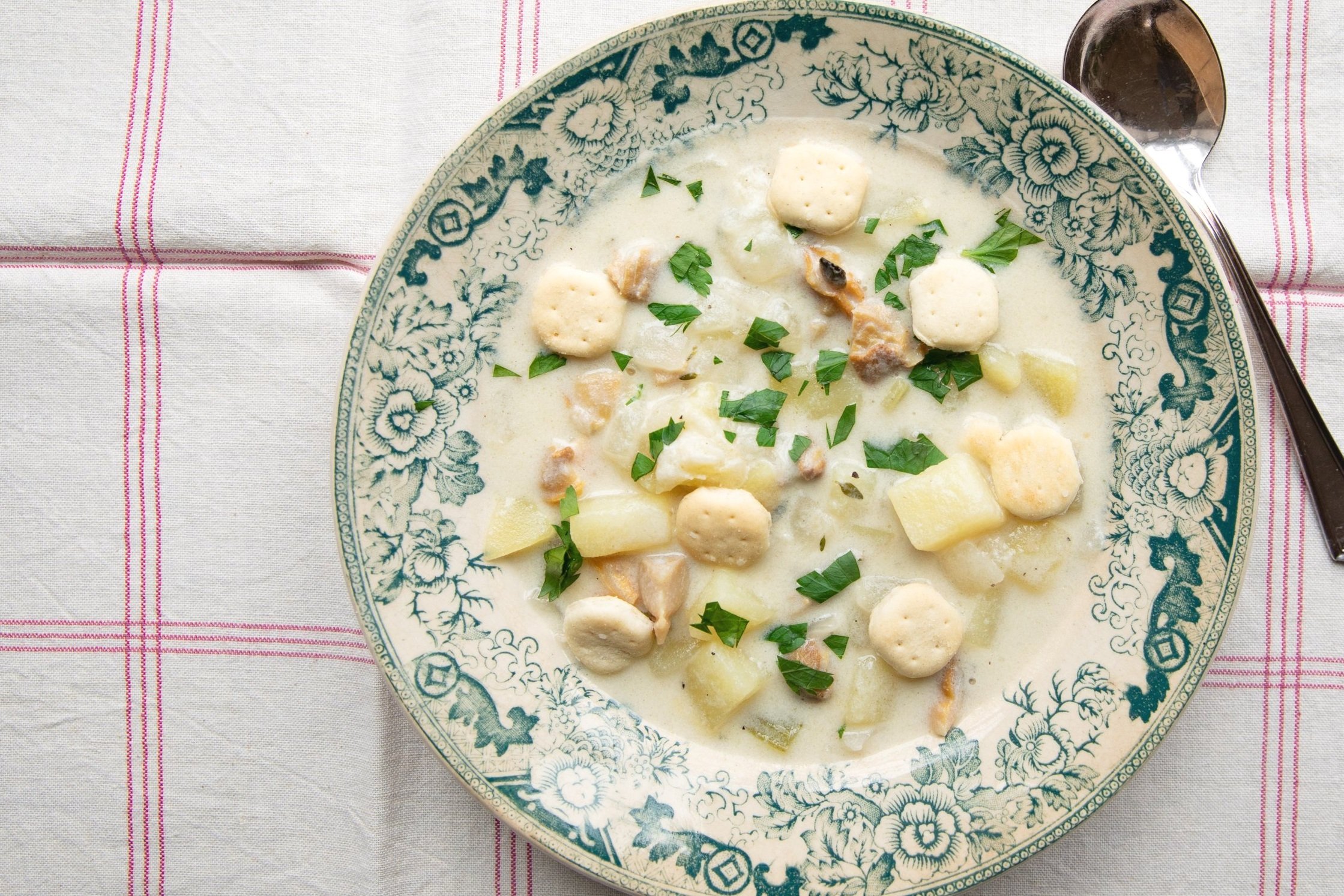If you’re waiting for spring in New York City, the month of March can feel like four years. To get through these chilly days, I’ve been distracting myself with wholesome winter videos of Montrealers’ antics in a recent snow dump, huskies refusing to come in from the cold, and old Warren Miller ski movies (absolute best voiceovers! Tonic for the soul! Second only to those of Sir David Attenborough). We will be choosing more snow for our spring break, so I think for now it’s best to just embrace it.
Hints of spring: bright green shoots of tarragon and chives are emerging in our planter beds, reminding me of how resilient nature is and hinting toward a new season of produce and cooking. The sound of birdsong, even in this urban landscape, changes right about now and soon we’ll be hearing the squawking of red-winged blackbirds out back.
Some things that are getting me through:
Reasons to Be Cheerful is an independent publication and newsletter founded by musician David Byrne. I recently subscribed to this “weekly dose of dopamine for your inbox” as an antidote to the daily media avalanche, and I now receive positive news of the environmental, scientific, and human variety.
In that vein, I also joined Front Porch Forum, a Vermont-only social network promoting “radical neighborliness” (it’s old school and kind of the anti-X). We’ve been spending more and more time in the Green Mountain state and I want to know more about what’s going on in the community.
I’ve been fascinated by studies suggesting a beneficial link between hot chili peppers, microbiome diversity, and even ADHD mitigation. Maybe my craving for ultra spicy foods isn’t just thrill seeking, after all? Yay for science and research! And Ben for sharing this tidbit!
On the subject of food facts, did you know there’s a Museum of Food and Drink (MOFAD) in Brooklyn? It’s in DUMBO, above Time Out Market, and the current exhibit explores flavor. I’ve been volunteering as a docent at this small but mighty museum and love their message that food is culture and connects us all. The team behind MOFAD is pretty great, too.
If you’re in the Charlottesville, Virginia area, check out my sister Cassie’s art exhibit, “Liminal,” at Second Street Gallery, near the Downtown Mall. Her art is gorgeous and this excellent gallery always has something fresh on offer.
The Philadelphia Flower Show is on at this writing, now through March 9. If you go there, immerse yourself in all things botanical, and say hi to my friend Kamila, who will be selling her beautiful art prints in maker’s booth M33 (if you’re nowhere near there you can still order her products online).
Citrus always comes to the rescue this time of year, and I recently worked up this recipe inspired by a dessert I had at our local F&F Restaurant and Bar. It’s uncomplicated, bright and cheerful—all things we need right now. I love the play of tart citrus fruits against rich, lightly sweetened mascarpone. If you forgo the garnish there are just three ingredients. You can also check it out on my web site, along with other recipes I update seasonally.
Recipe for pistachio-orange shortbread is on my site
Citrus & Mascarpone
Serves 4
Ingredients:
6 citrus fruits, preferably a mix, for example: 1 large grapefruit, 3 oranges such as Cara Cara, plus 2 of “something else”, like blood orange and/or Meyer lemon.
1 cup (8 oz.) mascarpone
1 1/2 tablespoons granulated sugar
Optional: bittersweet chocolate or fresh mint leaves for garnish
Instructions:
Stir the mascarpone and sugar together well, and set aside at room temperature. The mascarpone should loosen up as it becomes less cold.
Section (suprême) each fruit: cut off the ends just until the fruit beneath is visible, then stand fruit on end and cut along the curve of the fruit, removing the rind and white pith entirely but leaving as much of the fruit possible. Repeat until you have removed all the rinds completely. Next, using a sharp knife, cut along the membranes that divide each section, toward the center of the fruit, until you have skin-free segments. (Though this takes a bit of work, it’s worth it since you’ll have more tender, flavor-intensive slices of fruit). Here’s a video.
Arrange the citrus segments on plates topped with some of the mascarpone. Serve as-is or garnish with finely grated, bittersweet chocolate or a scattering of fresh mint leaves. I like to serve this with a cookie, such as pistaschio-orange shortbread.
Alentejo, by Cassie Guy
Lastly, if you are wondering how to help the must vulnerable members of your community right now, consider supporting your local mutual aid network, which you can locate using this resource. For local Brooklyn folks I absolutely love The Service Collective, which offers tons of kid-friendly volunteer opportunities, so the whole family can help out. Thank you, Marji, for setting up a recent fun project through TSC, assembling toiletry kits with our middle schoolers.













